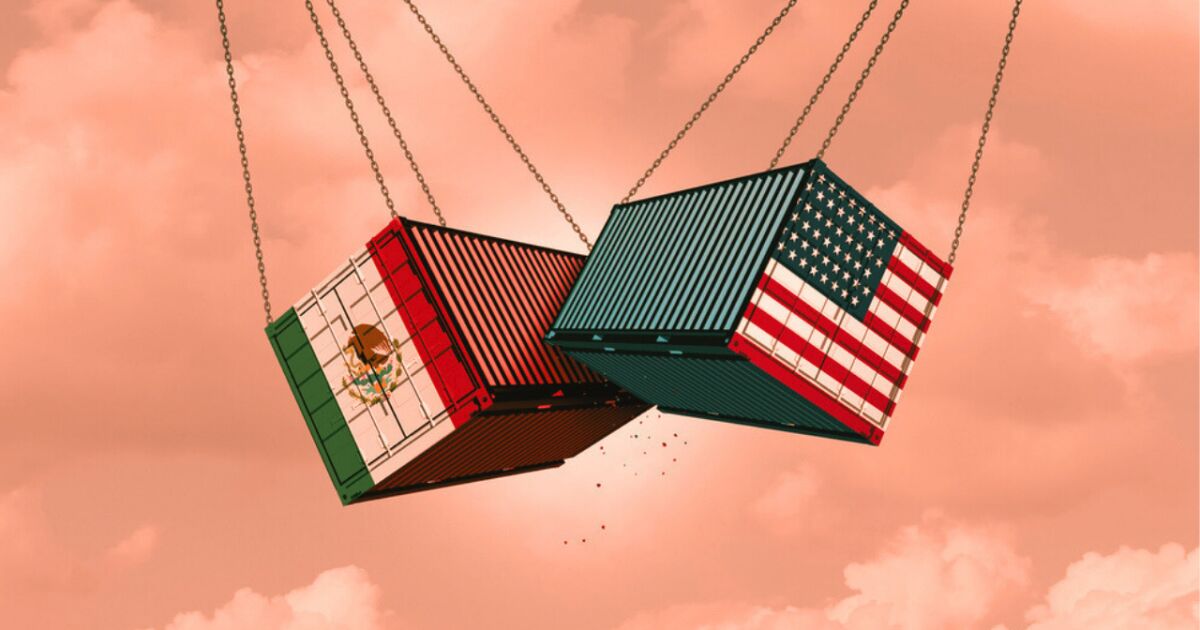Who can replace Mexico?
The four main items that the United States imports from Mexico are computers and processing units, automobiles, vehicle engine parts, and motor vehicles for transportation. How easy would it be to replace, for example, these imports and which countries could most easily replace Mexico?
According to an analysis by Banco BASE, there are specific obstacles for this to be achieved, the first is that Mexico has an incomparable logistical advantage, the second is that there are very few economies in the world that can compete head-on with Mexico and the majority of They are outside the continent.
Regarding logistics costs, the financial institution explained that the logistical cost of importing goods from Mexico to the United States is one of the greatest advantages that the country has. Well, it is just 0.79 dollars per 100 dollars of US imports, which is well below the average of 2.8 dollars per 100.
This is relevant because the export powers in the items in which Mexico has a key participation are advanced economies such as Germany, Japan and South Korea, in addition to China, the main emerging economy. All of them are outside the American continent and would represent a considerable increase in transportation costs.
“(Although) other countries such as China, Vietnam, India or nations in Central America have export capabilities in key sectors such as automotive, light manufacturing and agriculture,” however, Mexico has lower transportation costs and delivery times thanks to the T-MEC and a long history of integration,” explained Ramsé Gutiérrez, senior vice president and co-director of Investments at Franklin Templeton México.
“Developing and establishing solid commercial relationships with new partners would take years, leaving gaps in the offer (during all that time),” added the specialist.
Is Canada competition?
According to Banco BASE, not necessarily. Canada, although it is very close to the United States, its export platform is less complex than that of Mexico, since it mainly supplies wood, metals and energy. Something similar happens with the rest of the Latin American economies.
And, speaking of emerging economies that lead some of the main items of US imports, Vietnam and Poland stand out in terms of electrical equipment and the Arab countries in energy.
Reshoring would be costly for both countries
Donald Trump wants companies to produce in the United States again and threatened a 25% tariff on Mexican imports that, according to him, could materialize in February. But that’s more complicated than it is to say.
“Trump said in his inauguration speech that the United States will return to being a manufacturing country, which could be achieved at the cost of much higher prices, higher inflation and interest rates, which would be reflected in lower US economic growth. ”Banco BASE indicated in the document.
And since countries theoretically export the products in which they have a comparative advantage, “forcing the return of all the manufacturing that the United States currently imports would be going back in time and putting specialization, innovation and product development at risk.”
Banco BASE warned that if Trump takes actions to relocate key industries for Mexico within his country, it could put the growth of foreign direct investment in Mexico at risk.
The Franklin Templeton specialist considered it necessary to take into account that Mexican labor is significantly cheaper and that attracting companies to the United States would increase production costs, affecting their global competitiveness and increasing inflation for Americans, something that goes against Trump’s promise to reduce prices.
“Reshoring within the United States could be considered for strategic sectors, but would require massive government incentives, which could generate a significant fiscal impact and not solve immediate logistical problems,” he commented.
















